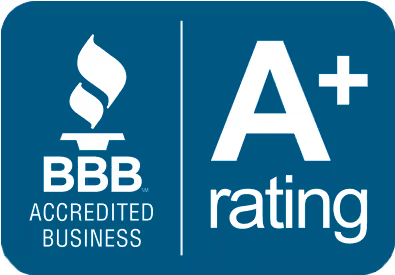
It’s something homeowners never want to see in their house. Along with being a dreadful sight, black mold can also be a health hazard to you and anyone else in your household. Mold spores can trigger reactions for those with mold allergies. Meanwhile, mold can even cause sickness in those with weakened immune systems. It is these potential dangers of black mold that make it critical to get rid of black mold in your basement whenever it shows up. More importantly is taking action to prevent it from growing in the first place.
Homes across the nation have problems with mold. That’s because mold can be found virtually everywhere. But where black mold really likes to grow is somewhere dark as well as damp—such as your basement. What ought to be a nice additional space for storage or an extra living space can be quickly turned into a danger zone if mold growth is left unchecked. It only takes a little bit of persistent moisture to give the mold spores in your house a chance to take root and grow.
Should you find black mold in your basement, there are ways to get rid of it and prevent it from coming back! Let’s take a dive into how black mold appears in your basement and how to get rid of these mold problems.
Mold is a natural part of our environment’s process of breaking down organic matter. Where there’s persistent moisture, mold will try to grow and spread, all the while breaking down the thing they’re growing on. In nature, this typically happens on organic debris such as wood, all as part of the natural cycle of life. Where mold grows, there are mold spores, and there are all sorts of molds out there in the world. No matter where you go, chances are there are mold spores—but without that key moisture, mold can’t grow.
But mold doesn’t know the difference between a fallen tree trunk in the middle of the woods and the damp space of a basement. Whether there’s water leaking in through a basement wall crack or droplets are condensing on the pipes in your basement somewhere, that moisture will encourage mold to begin the process of colonizing and growth.
The short answer is yes, there are kits out there that can be used to collect a mold sample and have it tested at a lab. But whatever kind of mold it may be, it should be removed as soon as possible to avoid both damage to your basement as well as to prevent potential health hazards from arising. No mold should be left alone to grow within your basement, or any other part of your home.
There are various molds that can appear in your basement, and a good number of them can appear as black mold, though they may come in different colors as well. Let’s take a look at the five most common types…
Also called toxic black mold. This mold is the main concern when black mold is ever brought up. It’s also one of the most common molds to appear in basements and tends to grow very fast, so getting rid of it as fast as possible is a priority. Toxic black mold loves to grow on drywall, wallpaper, wood, and gypsum board. This black mold can cause a variety of symptoms such as coughing, sneezing, headaches, rashes, fatigue, and it can trigger allergic reactions and other asthma symptoms.
Another mold that can appear black in appearance, Alternaria also appears in a brown or olive color. This mold can potentially cause serious infections in individuals, though it is rare. All the same, it should be removed quickly as it is very fast growing.
Aspergillus has a more yellowish appearance, but earns a place on this list for how common it is. It is considered to be low risk but should be removed all the same. It can affect those with asthma. For those with weakened immune systems, it has been known to cause illnesses collectively known as Aspergillosis.
While typically brown, this mold can also have a gray or a black appearance. This is one of the more slow-growing types. Cladosporium can cause allergic reactions and agitate those with asthma.
Popularly known for being used in the creation of the antibiotic penicillin, Penicillium tends to appear white or green. As a mold in your basement, it can trigger allergic reactions and possibly infections, especially for those with compromised immune systems.
If you’re determined to try getting rid of the mold yourself, there are several steps you’ll need to take to try controlling the presence of mold.
While trying to put a stop to mold in your basement, it is important to wear protective gear such as a face mask, gloves, and disposable cleaning tools like sponges. If you have a dehumidifier, be sure to run it and remove as much moisture as possible from the basement. But if you don’t feel confident about trying to take on the mold yourself, call for a professional mold expert. They will have the knowledge and mold removal solutions to help ensure that the job gets done right.
Moisture is the key to what allows mold to grow. If you can prevent moisture problems and groundwater intrusion into your basement, you can help protect your basement from mold infestations. Here are some measures you can take to keep your basement dry and safe from mold…
For over 64 years, ’58 Foundations & Waterproofing has been in the business of keeping basements and crawl spaces dry with effective and long-lasting solutions! Damp basements are the perfect place for black mold to grow. But with our wet basement repair expertise and our mold removal services, we’ll clear your basement of that nasty black mold, and make your basement a safe and dry place once again. We’re proud to be an exclusive DOT ambassador, utilizing a mold removal solution that offers great results with less chemical burden. Our mold solution not only removes mold, but it can even help revitalize the surfaces of affected wooden structures.
Give us a call today to schedule for a free mold inspection and receive a detailed estimate. With our quality products and mold removal professionals, you can count on us to make your basement mold-free!






We respect your privacy. By submitting, you authorize '58 Foundations and Waterproofing to reach you via call, email or text for information about your project needs. We will never share your personal information with third parties for marketing purposes. You can opt out at any time. Message/data rates may apply. Consent is not a condition of purchase. Privacy Policy